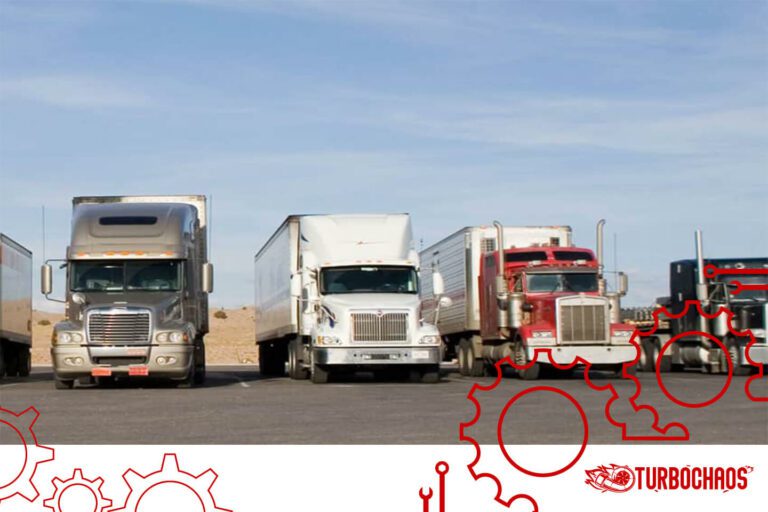Semi Truck Turn Radius | Dimensions & Drawings
When it comes to maneuvering large vehicles like semi-trucks, one of the most crucial factors to consider is the Semi Truck Turn Radius. This guide aims to provide a comprehensive look at what turn radius is, why it’s important, and how it affects various aspects of truck driving and road design.
Key Takeaways
- Understanding the Importance of Turn Radius in Semi Trucks
- Factors Affecting Turn Radius
- How to Measure Turn Radius
- Implications for Road Design and Safety
- FAQs About Semi Truck Turn Radius
What Is Semi Truck Turn Radius?
The turn radius of a semi-truck is between 40′-40’10” | 12.2-12.4 m, the radius refers to the smallest circular turn that the truck can make. It is a critical factor in the design of roads, parking lots, and other public spaces where large vehicles need to maneuver. Understanding the turn radius is essential for both drivers and city planners to ensure safety and efficiency.

Factors Affecting Turn Radius
Wheelbase
The length between the front and rear wheels of the truck plays a significant role in determining the turn radius. A longer wheelbase generally results in a larger turn radius.
Speed
The speed at which the truck is moving can also affect the turn radius. Higher speeds may require a larger radius for safe turning.
Truck Design
Different models of semi-trucks have varying turn radii. Knowing the specific turn radius of the truck model you are driving is crucial for safe maneuvering.
How to Measure Turn Radius?
Measuring the turn radius of a vehicle, especially a large one like a semi-truck, is a critical aspect of understanding its maneuverability. The turn radius is essentially the space a vehicle needs to make a complete 180-degree turn. Here’s how you can measure it:
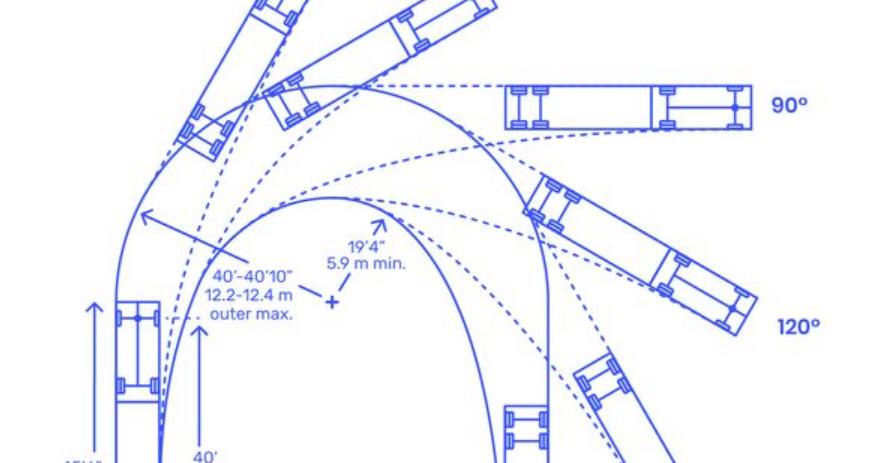
Equipment Needed
- Measuring tape
- Cones or markers
- A helper to assist with measurements
- Calculator for calculations
Steps to Measure Turn Radius
1. Choose a Suitable Location
Find a large, open space like an empty parking lot where you can safely perform the turn without any obstructions.
2. Mark the Starting Point
Place a cone or a marker at the point where the front wheel of the vehicle is before you start the turn.
3. Execute the Turn
Slowly drive the vehicle in a complete 180-degree turn. Make sure to turn the steering wheel to its maximum limit to achieve the tightest possible turn.
4. Mark the Ending Point
Once the vehicle has completed the turn, mark the point where the front wheel ends up with another cone or marker.
5. Measure the Distance
Use a measuring tape to measure the distance between the two markers. This distance is the diameter of the turn circle.
6. Calculate the Radius
To find the turn radius, divide the measured diameter by 2. The result is the turn radius of the vehicle.
Additional Tips
- Make sure to perform this test multiple times to get an average measurement.
- Always consider safety precautions, such as wearing high-visibility clothing and ensuring the area is free of other vehicles and pedestrians.
Applications
Understanding the turn radius is crucial for various applications:
- Route Planning: Knowing the turn radius can help in planning routes that the vehicle can safely navigate.
- Parking: It aids in understanding whether a vehicle can be parked in spaces with tight corners.
- Safety: A smaller turn radius can be beneficial in emergency situations where quick maneuvering is required.
By following these steps, you can accurately measure the turn radius of a vehicle, which is an essential factor for safe and efficient driving.
Implications for Road Design and Safety
Understanding the turn radius of semi-trucks is crucial for the design of roads, parking lots, and other public spaces. It helps in creating safer and more efficient layouts for both drivers and pedestrians.
Turn Radius in Different Truck Models
Different models of semi-trucks have varying turn radii. In this section, we will compare the turn radius in popular semi-truck models and discuss the implications for drivers.
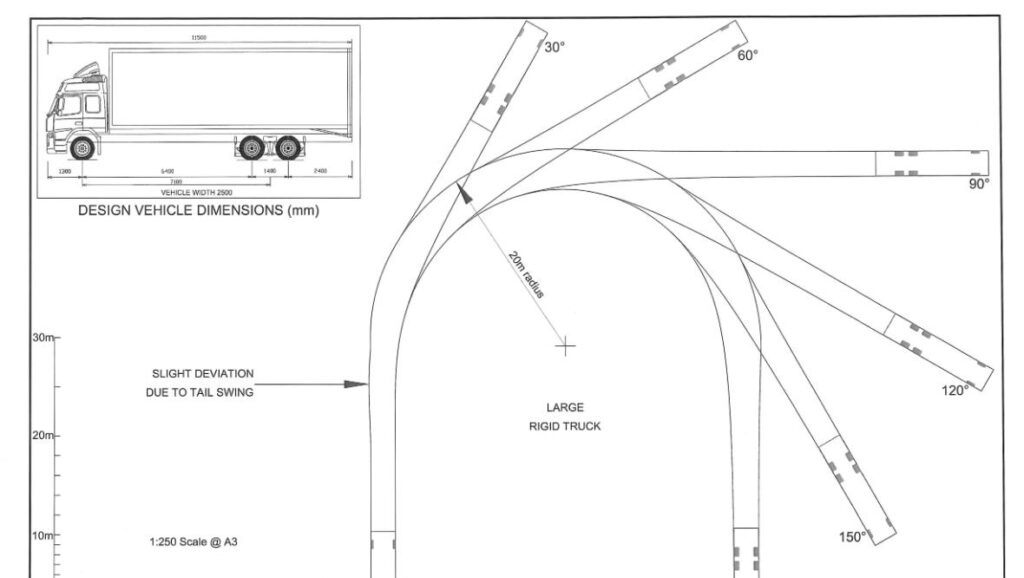
Understanding the Physics Behind Semi-Truck Turn Radius
The Role of Wheelbase
The wheelbase of a semi-truck plays a significant role in determining its turn radius. A longer wheelbase generally means a larger turn radius, making it more challenging to navigate tight spaces.
Effect of Speed
Speed is another factor that impacts the turn radius. Higher speeds can make it difficult to maintain a small turn radius, increasing the risk of tipping over.
Impact of Load
The weight and distribution of the load can also affect the turn radius. An unevenly distributed load can make the truck unstable during turns, requiring a larger turn radius for safe operation.
Safety Measures and Regulations
Federal Guidelines
There are federal guidelines in place that specify the maximum turn radius for semi-trucks to ensure road safety.
State-Specific Rules
Some states have their own rules regarding turn radius, which may be more stringent than federal guidelines.
Role of Trucking Companies
Trucking companies often have their own set of internal guidelines that drivers must follow, which may include restrictions on turn radius in specific situations.
Technological Advancements
GPS and Turn Radius
Modern GPS systems can calculate the turn radius in real time, helping drivers make safer turns.
Advanced Driver-Assistance Systems (ADAS)
ADAS can assist in maintaining a safe turn radius by providing real-time data and alerts to the driver.
Real-World Scenarios
Urban vs Rural
The required turn radius can vary significantly between urban and rural settings. City driving often involves tighter turns, while rural roads may allow for a larger turn radius.
Weather Conditions
Weather conditions like rain, snow, and ice can affect the turn radius. Drivers must exercise extra caution and may need to increase their turn radius in such conditions.
Training and Skill Level
Importance of Training
Proper training is crucial for understanding how to maintain a safe turn radius under various conditions.
Experience Matters
Experienced drivers are generally better at judging the required turn radius in different situations, making them more efficient and safer on the road.
How Tight Of A Turn Can A Semi-Truck Make?
The tightness of a turn a semi-truck can make depends on various factors, including the kingpin-to-trailer axle(s) distance, known as the Kingpin-to-Rear-Axle dimension (KPRA), and the Kingpin-to-Center-Of-Axle-Group (KPCG).
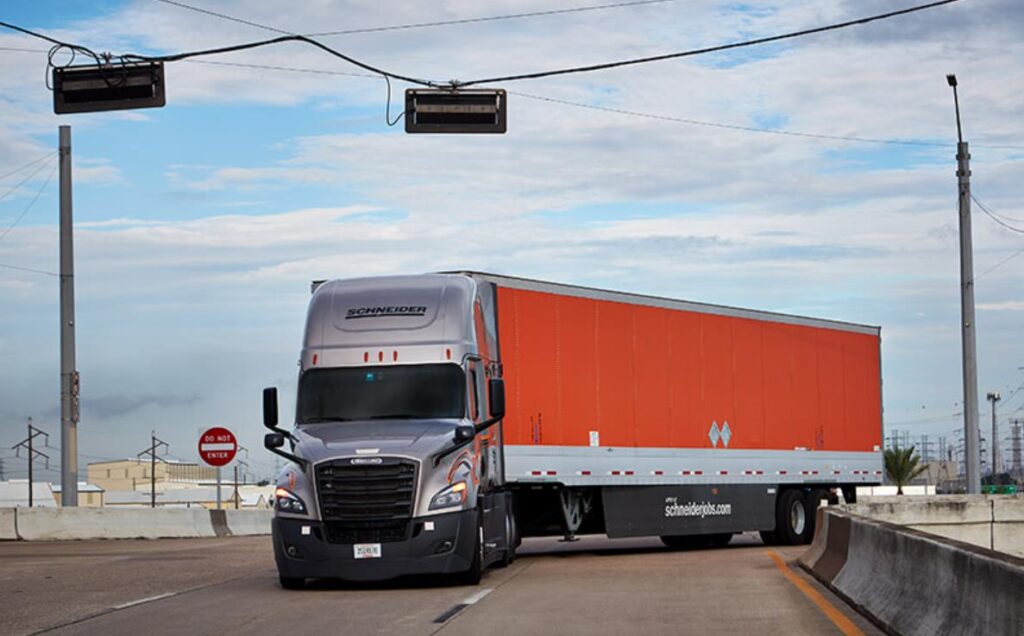
For a 53ft trailer with slidable tandems, the KPRA is usually about 38′6″ when the tandem slide rail is at the forward mechanical stop, and 46 ft-47 ft when at the rear mechanical stop.
This puts the KPCG at about 36′6″. Therefore, the truck would need at least 36′6″ of space to make a turn, equivalent to about 3 full lanes of travel.
What Is The Turning Radius Of A 32 Feet Truck?
The turning radius of a 32-foot truck can vary depending on the wheelbase and other design factors. Generally, smaller trucks have a tighter turning radius compared to larger ones. The average turning radius for a 32-foot truck could be around 30 to 40 feet.
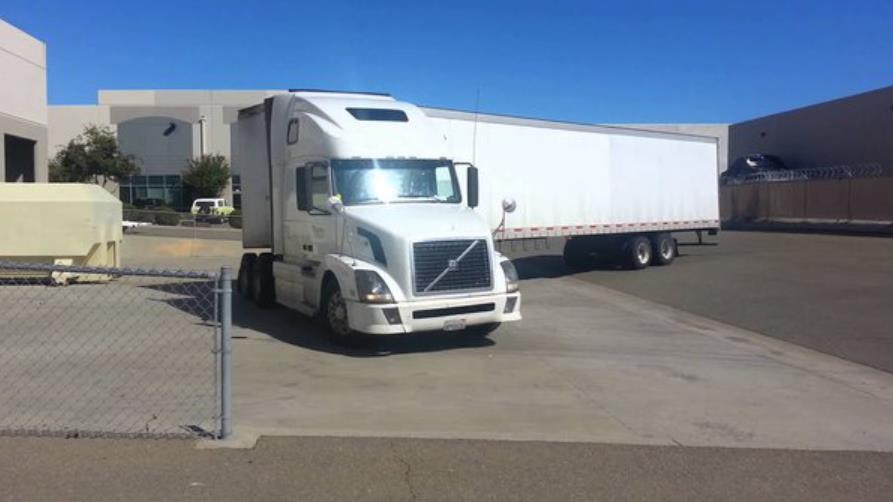
What Is The Turning Radius Of An 80 Feet Trailer?
An 80-foot trailer would have a significantly larger turning radius, often requiring at least 50 to 60 feet or more. The exact turning radius would depend on the design, wheelbase, and whether the trailer has steerable axles.
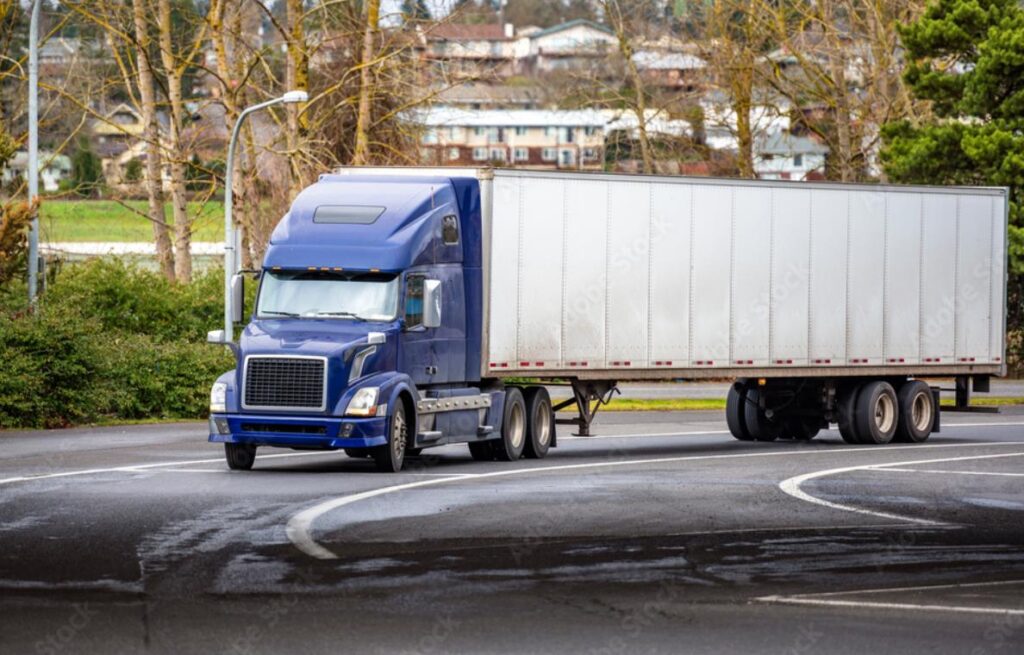
What Full Size Truck Has The Best Turn Radius?
The full-size truck with the best turn radius is often a subject of debate among experts. However, trucks with shorter wheelbases and advanced steering systems generally have a better-turning radius. Models like the Ford F-150 and Ram 1500 are often cited for their relatively tight turning circles.
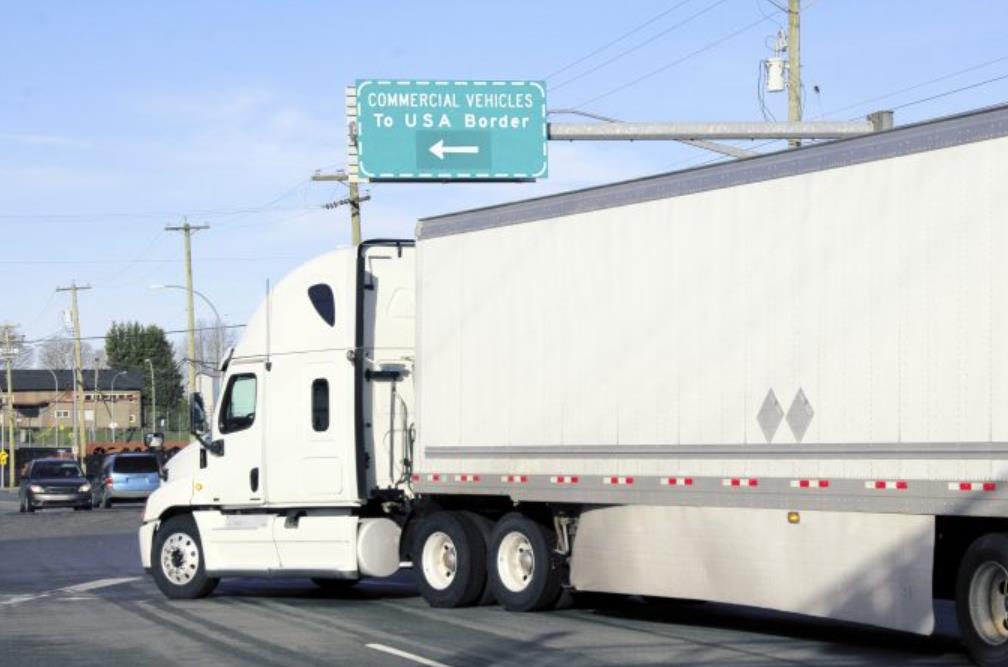
What Is The Turning Radius Of The SU 30 Truck?
The SU 30 Truck is not a standard model commonly recognized in the trucking industry. Therefore, specific information about its turning radius is not readily available. However, the turning radius would depend on its wheelbase, design, and other engineering factors.
Conclusion
Understanding the Semi Truck Turn Radius is crucial for both safety and efficiency. Various factors like wheelbase, speed, and load can impact the turn radius. Adhering to federal and state guidelines, leveraging technological advancements, and proper training can go a long way in ensuring safe and efficient turns.
People Also Ask
What is the average turn radius for a semi-truck?
The average turn radius for a semi-truck can vary significantly depending on the model and wheelbase. However, it generally ranges from 35 to 55 feet.
How does speed affect the turn radius?
Higher speeds can make it difficult to maintain a small turn radius, increasing the risk of tipping over or losing control of the vehicle.
Are there any federal guidelines on semi-truck turn radius?
Yes, there are federal guidelines that specify the maximum allowable turn radius for semi-trucks to ensure road safety. These guidelines may vary by state.
How do weather conditions impact the turn radius?
Weather conditions like rain, snow, and ice can affect the turn radius. Drivers must exercise extra caution and may need to increase their turn radius in adverse weather conditions.
Can technology help in maintaining a safe turn radius?
Absolutely. Modern GPS systems and Advanced Driver-Assistance Systems (ADAS) can provide real-time data and alerts to help drivers maintain a safe turn radius.

Welcome to the exhilarating world of Matt Rex, a professional car racer turned renowned vehicle enthusiast. Immerse yourself in his captivating blog as he shares heart-pounding adventures, expert reviews, and valuable insights on cars, trucks, jets, and more. Fuel your passion for speed and discover the beauty of vehicles through Matt’s engaging stories and meticulous expertise. Join the ever-growing community of enthusiasts who find inspiration and expert advice in Matt Rex’s blog—a digital hub where the thrill of speed meets the pursuit of knowledge.



